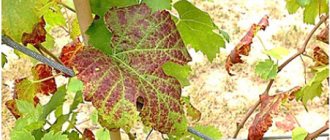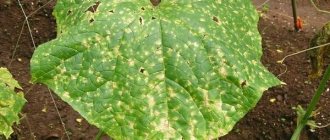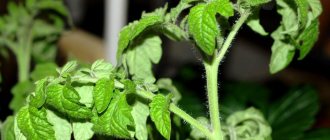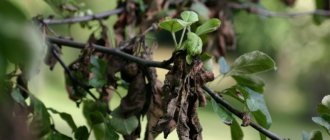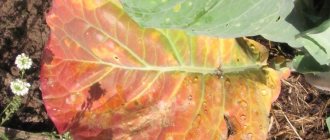Growing tomatoes is not difficult if you approach it responsibly. But sometimes even experienced gardeners make mistakes, and the harvest is not as rich as expected. To make tomatoes in the garden beds pleasing to the eye, you need to pay attention not only to the growing process, but also to the fight against external factors that can negatively affect the harvest.
If the plant begins to wither, it is necessary to identify the cause as soon as possible. In this article we will look in detail at what to do when the leaves on tomatoes curl.
What causes the pathology?
The main reasons why tomato leaves curl in a greenhouse
- The root system is damaged when transplanting seedlings into a greenhouse.
- Excessively active fertilizer, as a result of which there is an excess of microelements and minerals.
- Insufficient quality feeding, which results in a shortage of necessary elements.
- Too much or, on the contrary, scanty watering.
- Incorrect execution of pinching and pinching.
- Uncomfortable temperature in the greenhouse (an overly warm atmosphere is especially dangerous).
- Infection of the plant with various diseases.
- Damage by garden pests.
The most dangerous situation is when leaf curling is caused by several reasons. In this case, it is quite difficult to treat tomatoes.
Below is a more detailed description of each of the reasons and tips for improving the condition of tomatoes. It is recommended that you carefully read this paragraph of the article in order to be aware of what can lead to a deterioration in the condition of the seedlings.
Mechanical damage
While weeding and loosening with a hoe, the vegetable grower accidentally damages the surface roots of the tomatoes. The plant reacts by curling its leaves. To maintain tomatoes, water them with “Kornevin”, “Kornerost” or another stimulating drug.
Belated breaking off of the stepsons, when their length exceeds 5 cm, injures the plant, to which it also reacts by twisting the foliage. The plantings are revived by spraying with the preparation “Zircon”.
The last reason why tomato leaves curl upward may be disease or pest damage. For stolbur, bushes are treated with “Phytoplasmin”, and bacterial cancer is treated with Bordeaux mixture. Tomatoes are treated against pests with commercially available insecticides.
Damaged root system
Often in the first days after transplanting tomatoes into a greenhouse, you can notice that the leaves begin to curl into a tube . This happens because some areas of the root system were damaged during plant replanting. This problem is especially common in overgrown tomatoes. After transplanting into the greenhouse, the tomatoes begin to recover. During the period while the roots are being restored, the plant is not able to obtain all the necessary elements. It is for this reason that leaves that do not receive sufficient nutrition begin to curl.
After some time, when the tomatoes adapt to the new place and fully take root, such a problem as leaf curling will no longer bother the seedlings.
Curling of the top leaves of tomato seedlings due to a small container
Everything is clear here - the root system of a grown plant becomes crowded in a small container, it does not receive adequate nutrition, and the growth of the tomato is inhibited. Is it any wonder why the leaves of tomato seedlings curl? Urgently plant the tomatoes permanently, or transplant them into a larger container.
Tips for the garden, vegetable garden and flower garden
How to plant strawberries with seeds at home
How to plant raspberries so they don’t spread around the area
For what reasons dry seeds do not germinate?
Lack or excess of feeding
A common problem for gardeners: wanting to speed up the growth of crops and get a more luxurious, juicy harvest, too much fertilizer is applied. However, this does not make tomatoes grow any better. Plants, on the contrary, begin to deteriorate from an excess of incoming microelements. The first signal of oversaturation of tomatoes with fertilizers is that the leaves curl up in a boat .
Tomatoes also suffer from lack of care for them. Too little fertilization of crops causes a deterioration in their condition. One of the symptoms of a deficiency of microelements and nutrients is that the leaves dry out and begin to curl.
For example, with a lack of potassium, the leaves curl, the veins of the leaf turn yellow, and its edges become brown. If there is not enough phosphorus, the leaves begin to curl, their veins become purple, and the base of the leaves turns pale green, with a grayish tint. A lack of boron leads to yellowing of the base of the leaves, and the veins acquire a purple tint. With copper deficiency, young leaves are primarily affected. They begin to curl towards the middle, yellow spots appear, which gradually turn black.
If tomatoes are oversaturated with nitrogen, the leaves not only curl, but also turn yellow . Also, the stems noticeably thicken, powerful stepsons are formed, which is considered a pathology. To normalize the nitrogen level and return the plants to their normal state, it is recommended in the open ground . It can be either stove or wood ash. Preparing the solution is quite simple - stir a glass of ash in a bucket of water. Treating tomatoes with such a solution will not only normalize the nitrogen level, but will also saturate them with a sufficient amount of potassium and phosphorus.
You can treat crops with the following solution:
- monophosphate - teaspoon;
- water – 10 liters.
Prepare a solution and spray each tomato bush. After this treatment, the leaves will stop curling.
You cannot fertilize greenhouse tomatoes with slurry and manure that is not sufficiently rotted. Fertilizing with manure will cause excess ammonia to form in the soil. As a result, the leaves curl inward, burn them, and necrotic damage to ripened tomatoes.
Common Tomato Diseases
Curling of plant leaves can be a consequence of viral and fungal infections. But in addition to this manifestation, others arise that are characteristic of a particular disease.
Diseases and their treatment:
- Bacteriosis. The cause of the disease is seeds that have not undergone the disinfection procedure. This makes young plants vulnerable. With bacteriosis, tomato leaves not only curl down, but also become smaller over time. The emerging flowers turn white. Seedlings slow down in growth. It is impossible to get rid of bacteriosis. Infected plants must be removed by the roots and burned so that the disease does not spread to other tomatoes.
- Fusarium. A fungal infection that spreads to tomato seedlings from the soil. First, the lower part of the bush is affected, and then all the leaves. The infected specimen is disposed of, and the soil is treated with a saturated solution of potassium permanganate. Neighboring bushes are sprayed with fungicides.
- Thin leaf virus. Another reason why leaf plates curl. Most often, the disease appears during periods of summer drought. The leaves turn into thin tubes, and the fruits appear very small. Treatment with a solution of potassium permanganate mixed with urea helps with this disease. In advanced cases, plants die.
- Bacterial cancer. It is considered a greenhouse disease. Tomatoes growing in open ground do not suffer from it. Develops at very high temperatures (more than +25 degrees) and excessive humidity. The leaf blades curl, and cracks along the entire length and ulcers form on the trunks. If you cut the stem, the brown ring inside will be clearly visible. The fruits become deformed and their seeds turn black.
Improper watering
Tomatoes are one of the most demanding crops when it comes to watering. The slightest lack of moisture or, on the contrary, excessively active watering leads to damage to the plant. The first symptom of improper watering is curling of the leaves.
If the leaves curl into a boat shape at the top , this indicates a lack of moisture. When such a sign appears, it is unacceptable to fill the tomatoes with water to make up for its deficiency! You need to loosen the soil, water the soil thoroughly and cover it with mulch. This will prevent excessively rapid evaporation, but the humidity will not be too high. The tomatoes will receive sufficient nutrition.
With high soil moisture, when watering is done too often, the leaves curl down . In addition, in this case, the root system suffers greatly, which can ultimately lead to damage to the bush.
Common Causes of Curling Leaves
The first thing you need to pay attention to is which leaf blades of the seedlings have begun to curl. If these are cotyledon leaves, then this means that they will soon fly off, which is a completely natural process and always happens as the tomato grows.
However, if real leaf plates begin to curl, then you must definitely figure out what the reason is, and this should be done as soon as possible.
There are many reasons for leaf curl. Among them are the following general reasons:
- improper preparation of the substrate and seed material for sowing or its complete absence;
- the plants lack nutrients or there are too many of them in the soil mixture;
- stagnation of fluid in the root system or drying out of the earthen coma;
- excessively low level of humidity in the room;
- the room is very hot;
- seedlings do not have enough light;
- the leaves were exposed to direct scorching rays of the sun;
- the plant is affected by a disease or harmful insects have settled on it;
- the root system of the bushes is very crowded in the container in which the seedlings are grown;
- during transplantation or pinching, the tomatoes received serious mechanical damage;
- feature of the variety.
Illiterate pinching, pinching
Another common cause of leaf curling is improper pinching and pinching of bushes. It is unacceptable to remove all the lower leaves of tomatoes immediately after transplanting the seedlings into the greenhouse and in the next 20 days. Only after 3 weeks is it allowed to carry out this manipulation; this will improve the ventilation of the tomato bushes, lead to a decrease in humidity, and the plant will absorb more moisture, nutrients, and light. The result is improved development of ovaries and fruits.
Pinching must be done correctly. You can remove no more than two lower leaves per week. If you do not follow this rule, the plant will begin to hurt, weaken and wither.
In order not to harm the tomatoes, it is necessary to carry out pinching correctly. It is allowed to remove only side shoots whose length exceeds 10 centimeters.
Uncomfortable temperature in the greenhouse
The gardener is obliged to monitor the temperature level in the greenhouse. It should not exceed +35°. If the temperature regime is disturbed, the tomato leaves will begin to curl. It is worth monitoring the condition of the plants. In most cases, as the temperature drops, the leaves begin to straighten.
However, bushes cannot always cope with high temperatures on their own. What to do to speed up the recovery of tomatoes? First of all, you need to thoroughly ventilate the greenhouse. Ventilation must be carried out regularly. To protect the crops from sunlight, cover them with durable material (it is not advisable to use fabric!). This will protect the tomatoes from elevated temperatures.
You can also use this solution:
- urea – 1.5 tablespoons;
- water – 10 liters.
If you treat tomatoes in a greenhouse with a solution in the evenings, this will speed up the recovery of the bushes after stress.
Temperature violation
Tomato leaves begin to curl upward when the plant is in too hot temperature conditions. From intense heat, especially in greenhouses, the tomato leaves of the upper and lower tiers wither and curl inward into tubes along the central leaf vein.
An indicator of leaf curling due to high temperature can be their freshness at night - the leaves begin to unfurl spontaneously during the cool period of the day.
Treatment
For tomatoes grown in a greenhouse and on unprotected soil, immediate measures are taken to restore the condition of the foliage:
- the greenhouse room is ventilated and a draft is created,
- mulch the soil with a thick layer of organic matter, including sawdust, straw, pine needles, humus,
- creating shade on top of tomato bushes by using covering material,
- daily spraying of urea in the evening in a proportion of 1.5 tbsp. l. per 10-liter volume of liquid or a weak solution with potassium permanganate,
- regular watering.
Diseases
Various bacteria, fungi, and viruses can provoke leaf curling. Tomatoes are prone to developing dangerous diseases (bacterial canker, Fusarium wilt or Verticillium wilt), the main symptom of which is downward curling. the upper leaves are mainly infected . After the leaves curl, they begin to wither, turn brown and dry out. Cracks and ulcerations form on the stems.
How to treat diseased tomatoes? If tomatoes are affected by cancer, it is useless to treat them; they also pose a threat to healthy plants. Therefore, they must be removed from the greenhouse and destroyed. For other diseases, copper oxychloride (1 liter) diluted in water (10 liters) will help.
Pest infestation
Insect pests are a common cause of deterioration in the condition of crops. The most dangerous for tomatoes are aphids, mites and whiteflies. They are the ones that cause the leaves to curl at the top of the bushes.
However, this method is not suitable for black aphids, since they are quite difficult to detect on the bushes on their own. Black aphids are very dangerous for tomatoes because these pests spray a substance that negatively affects tomatoes. Tomato leaves begin to curl and turn yellow. Black aphids feed on sap from the stems of the bush, which also leads to damage to the plant. To get rid of the pest you need to use powerful insecticides. If the leaves begin to curl, you need to carefully examine them. To do this, you need to carefully hold the sheet with your hands and carry out an inspection, especially from the inside of the sheet. If insects are visible to the naked eye, it is necessary to take immediate action - use insecticidal preparations or place adhesive-type bait traps near the bushes.
You can also use a more gentle method of treating diseased bushes. You need to prepare a decoction of yarrow and chamomile. Intensively spray the bushes with it, not only those affected by pests, but also healthy ones (as a preventive measure).
Preventive measures
It is easier to prevent a problem than to get rid of its consequences. Below are several recommendations that will help protect your tomatoes. You can also use these methods at the first sign of leaf curling.
- Shade plants using lutrasilot.
- Spray the bushes with urea, dissolving 2 tablespoons in a bucket of water.
- Fertilize tomatoes with Solution. This is a ready-made balanced complex that can be purchased at a specialty store. It will saturate the plants with essential microelements without causing an excess of nutrients.
- Do not fertilize tomatoes with fresh or insufficiently rotted manure. This will provoke an increase in ammonia in the soil, leading to leaf curling and burning.
- Tomatoes should be watered no more than once a week. Excessively frequent watering, as well as drying out the soil, will cause curling of the leaves and damage to the crops.
- To protect against pests and at the first signs of infection, it is recommended to use Tanrek, Alatar, Topaz, Ordan or Biotlin. If the leaves begin to curl, you can use complex treatment. First, treat the bushes with Topaz solution (2 ml of product per bucket of water), a week later - with Ordan solution (25 grams per half bucket of water).
- If leaf curling occurs due to a bacterial infection, it is recommended to use Avixil.
- If the leaves of tomatoes curl and the stem thickens, these are symptoms of an excess of nitrogen. You can reduce the concentration of nitrogen in the soil by watering it with clean water.
- If the soil is not sufficiently moistened, the leaves curl into a boat shape. The easiest way to restore the condition of plants is to loosen the soil and water it. However, you will have to wait at least a week until the leaves straighten.
- To prevent tomato leaves from curling, water the plants with water whose temperature does not exceed +20°.
By following these recommendations, you can not only prevent leaf curling, but also other, more dangerous and serious problems.
It is quite difficult to determine what exactly caused the tomato leaves to curl. Therefore, there are no clear, specific instructions on how to return the bushes to their normal shape. But in any case, leaf curling is a pathology that cannot be ignored. Otherwise, you may lose the entire harvest.
It is recommended to analyze the conditions in which tomatoes grow and develop. You also need to pay attention to what the garden is treated with, whether there is enough fertilizer for the plants. It is important to monitor the temperature level and quality of soil moisture. Only such an attitude to the problem will allow us to determine what caused the deterioration of the plants and take the necessary measures.
How to treat tomatoes for leaf curl
How to treat upward curling of leaves in tomatoes if the cause is pest infestation?
To treat tomato bushes from pests do:
- garlic solution. Take 1 liter of water and 150-200 g of chopped garlic. Keep for 5 days. This is how garlic concentrate is obtained. To treat tomato bushes, dilute 1-2 tablespoons of concentrate per 1 liter of water. Then the leaves of the plants are sprayed generously;
- tincture of wormwood. The concentrate is prepared by infusing 500-650 g of wormwood in 5 liters of boiling water for 2-3 days. To irrigate the bushes, mix 9 liters of water and 1 liter of concentrate;
- tobacco tincture. Chopped tobacco (about 200 g) is poured with boiling water (5 l) and left for 1-2 days. The bushes are sprayed with the solution (you can add 100 g of laundry soap).
Attention! Experienced tomato growers advise repeating the treatment after 3-5 days.
